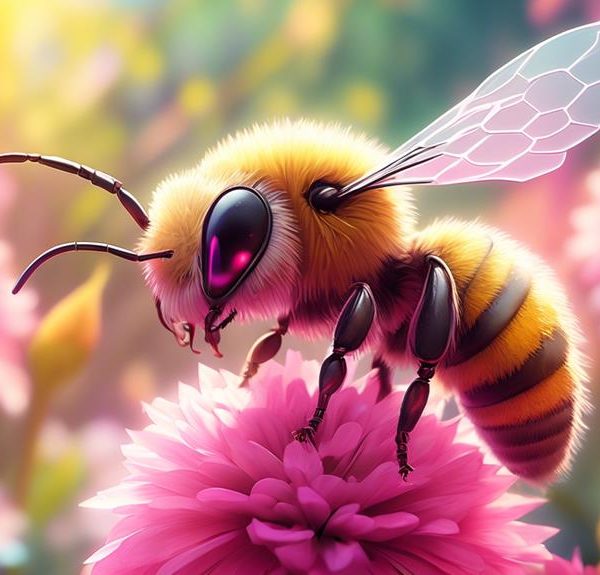Find out why bees astonishingly have five eyes and delve into the intriguing world of their exceptional vision capabilities.
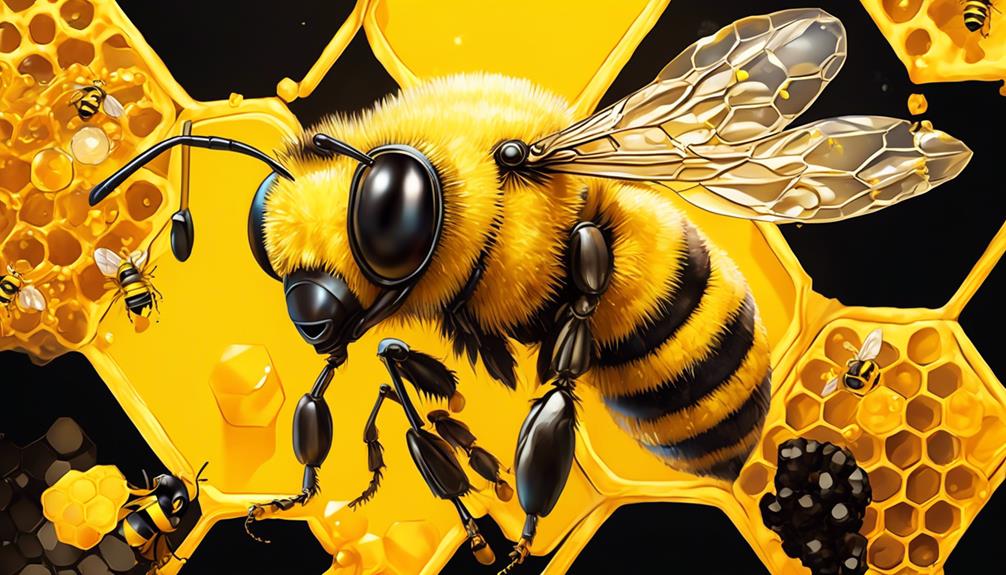
Why Do Bees Have 5 Eyes
You may not know this, but bees, those industrious pollinators buzzing in your garden, have five eyes. Yes, it's true. They've got two large compound eyes on the sides of their heads and three smaller ocelli eyes on the top.
Now, you're probably wondering, 'Why on earth would a bee need five eyes?' Well, it's a bit more complicated than just having extra visual aid. Let's just say that when it comes to these creatures' extraordinary vision capabilities, there's more than meets the eye.
Curious to find out more? Stick around, and you're in for a fascinating exploration into the world of bee vision.
Key Takeaways
- Bees have two compound eyes and three ocelli eyes, which together provide them with an extraordinary visual system.
- Compound eyes are excellent at detecting motion and patterns, while ocelli are sensitive to light intensity.
- Multiple eyes are vital for bees' survival and efficiency as pollinators, helping them navigate, find flowers, detect predators, and communicate.
- Bee vision, with the help of compound eyes and ocelli, plays a crucial role in their ability to locate flowers, interpret the sun's position for communication, and ensure effective pollination.
Understanding Bee Anatomy
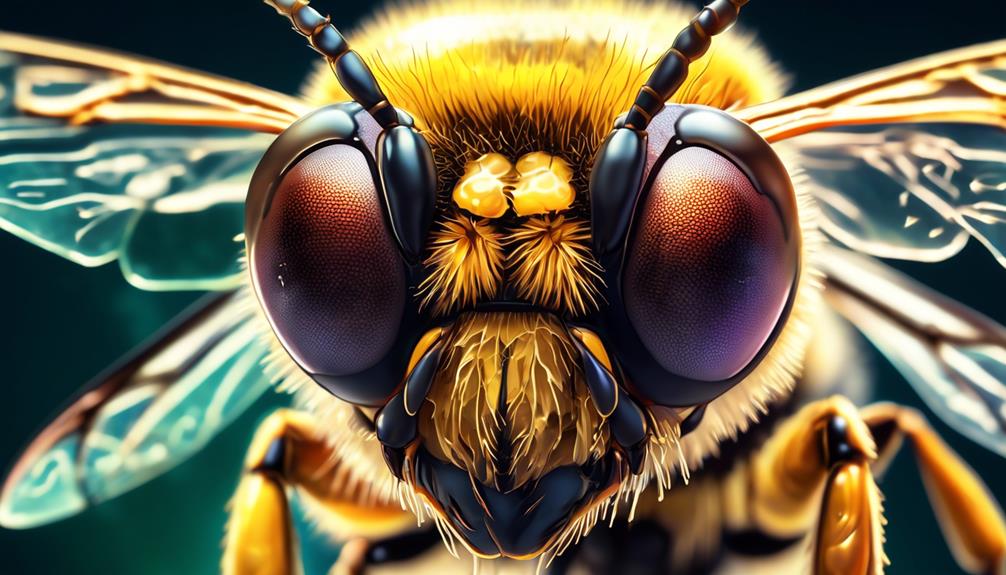
To fully comprehend why bees have five eyes, you'll need to delve into the intricacies of bee anatomy. You might be surprised to learn that these buzzing creatures not only have compound eyes but also simple eyes, called ocelli.
The compound eyes are what you're probably picturing – two large, multi-faceted eyes on the sides of the bee's head. These eyes are excellent at detecting motion, which is crucial when a bee is flying at high speeds or navigating through a field of flowers.
The three ocelli, however, are located on the top of the bee's head. They're much smaller and less sophisticated than the compound eyes, but they serve a unique purpose. They're sensitive to light intensity, which helps bees orient themselves to the sun and maintain a steady flight path.
In short, these five eyes together give bees an extraordinary visual system that's highly adapted to their environment and lifestyle.
The Evolutionary Purpose of Multiple Eyes
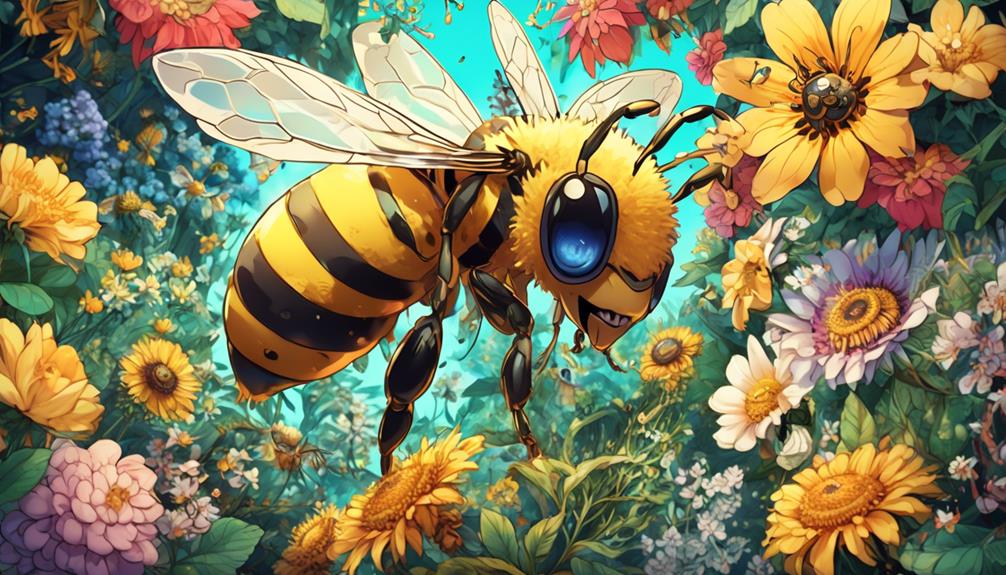
Building on our understanding of bee anatomy, let's now explore why evolution has equipped bees with multiple eyes. Evolution is a process that fine-tunes living organisms to be perfectly suited for their environment and lifestyle. In the case of bees, having five eyes isn't an accident, but a product of millions of years of evolutionary design.
Bees have three simple eyes, or ocelli, on the top of their heads which are sensitive to light and darkness. These eyes don't see images but help bees navigate by detecting changes in light intensity, thus aiding in their orientation.
The other two eyes are compound eyes which are made up of thousands of tiny lenses. These eyes capture images and help bees find flowers, detect predators, and communicate with their hive mates through a series of movements known as the 'waggle dance'.
To put it simply, bees' multiple eyes are vital for their survival and efficiency as pollinators. Without the combined functions of these eyes, bees wouldn't be able to navigate, find food, or communicate effectively. It's an amazing example of how evolution shapes organisms to fit their roles in the ecosystem.
Dissecting Bee Vision Capabilities
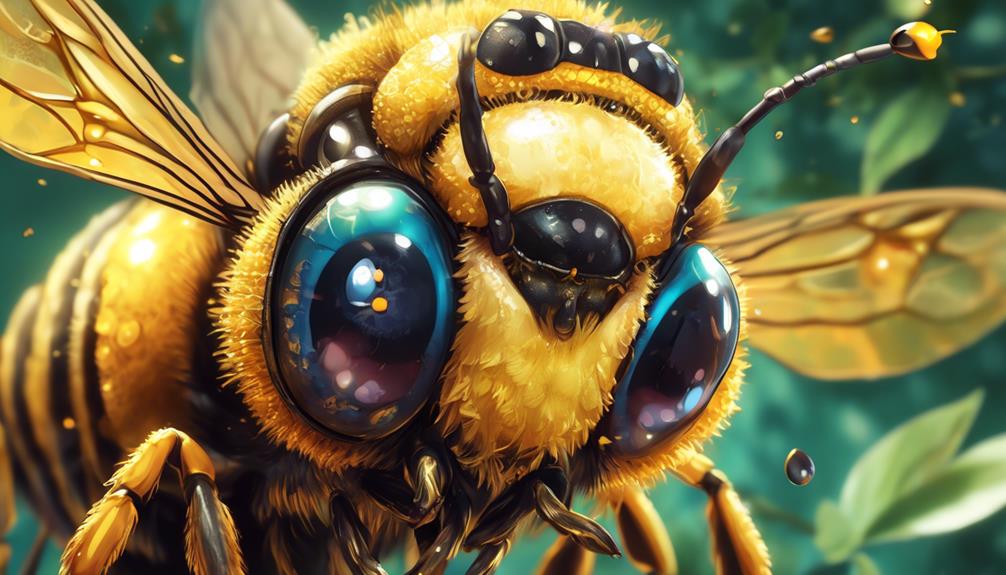
Diving deeper into the world of bee optics, let's explore how these five eyes work together to provide bees with their unique vision capabilities. You'd be surprised to know that each eye has a distinct function.
The two large compound eyes on the sides of a bee's head are composed of thousands of tiny lenses called ommatidia. They pick up movement and patterns, enabling bees to navigate their environment and recognize flowers. They're also sensitive to ultraviolet light, which is invisible to humans but essential for bees to locate nectar.
The three smaller eyes, or ocelli, located on the top of the head, are simple eyes. They can't form images but detect light intensity and help regulate the bee's biological clock.
To visualize the division of labor among bee's eyes, check out the table below:
Eye Type | Number | Function |
|---|---|---|
Compound Eyes | 2 | Detects movement, patterns, and ultraviolet light |
Ocelli | 3 | Senses light intensity and regulates biological clock |
How Bees Use Their Eyes
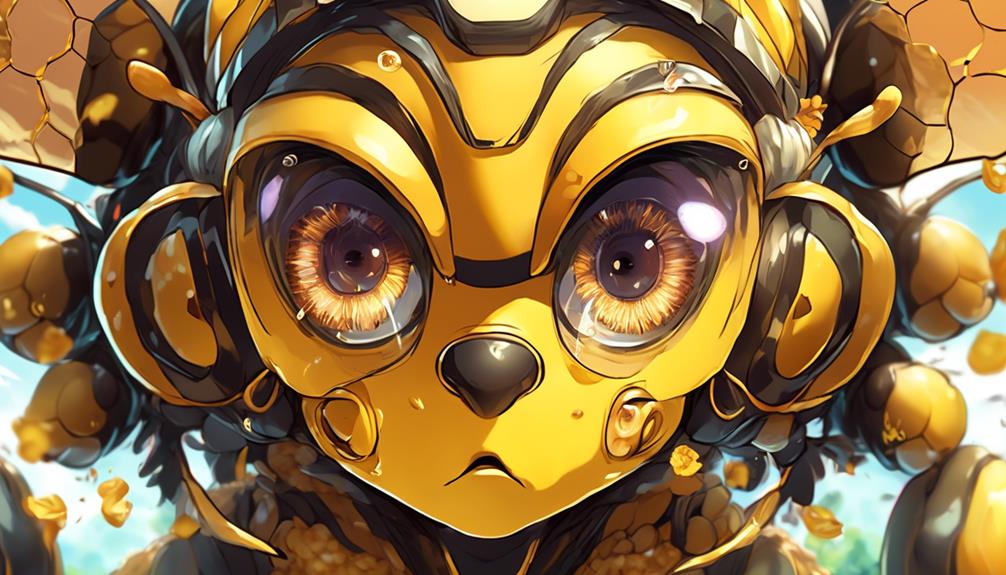
Having examined the structure and function of a bee's five eyes, let's now unravel exactly how these fascinating creatures utilize their unique visual system in their daily activities. You'd probably be surprised to learn that bees use their eyes for more than just basic sight.
Their three small, simple eyes, or ocelli, located on the top of their head, help them to orient themselves to the sun. They're not used for detailed vision, but instead tell them if it's light or dark. This is crucial for their navigational skills, as it allows them to locate their hive and food sources.
The two large compound eyes, on the other hand, are the ones that provide detailed and color vision. They're made up of thousands of hexagonal facets, each functioning as an individual photoreceptor. They enable them to distinguish between different types of flowers and to spot predators. They also play a key role in their famous 'waggle dance,' a unique communication method where they indicate the location of food to their fellow bees.
The Role of Eyes in Bee Communication
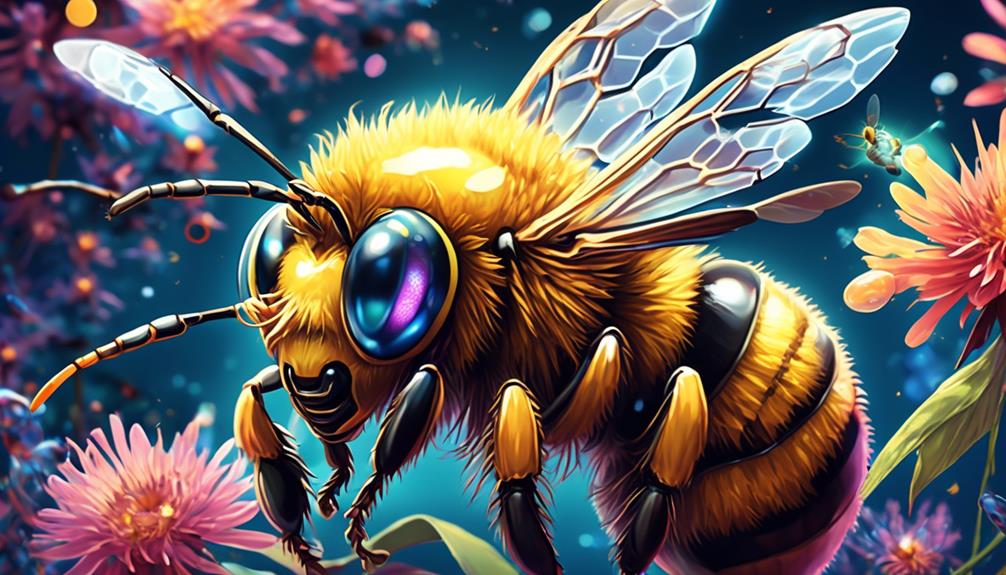
In the intricate world of bees, their eyes play a significant role in communication, particularly in the execution of their signature 'waggle dance'. This dance, a figure-eight maneuver, is how bees relay information about the direction and distance to nectar sources.
You might wonder, how do the eyes factor into this? Consider the bee's five eyes: two large compound eyes and three small simple eyes, or ocelli. The compound eyes provide a panoramic view, crucial for navigation, while the ocelli, positioned on the top of the head, detect light intensity and polarization. This data aids in interpreting the sun's position, a key reference point for the waggle dance's directional component.
When a bee performs the waggle dance, it's essentially translating the sun's position and the direction of the food source into a tactile language that other bees can understand. So, the eyes of the bee aren't only receivers of visual input but also translators of environmental data into a language that the hive can understand.
Therefore, the role of eyes in bee communication is vital. Their eyes are indispensable tools in the survival and prosperity of the hive.
Impact of Bee Vision on Pollination
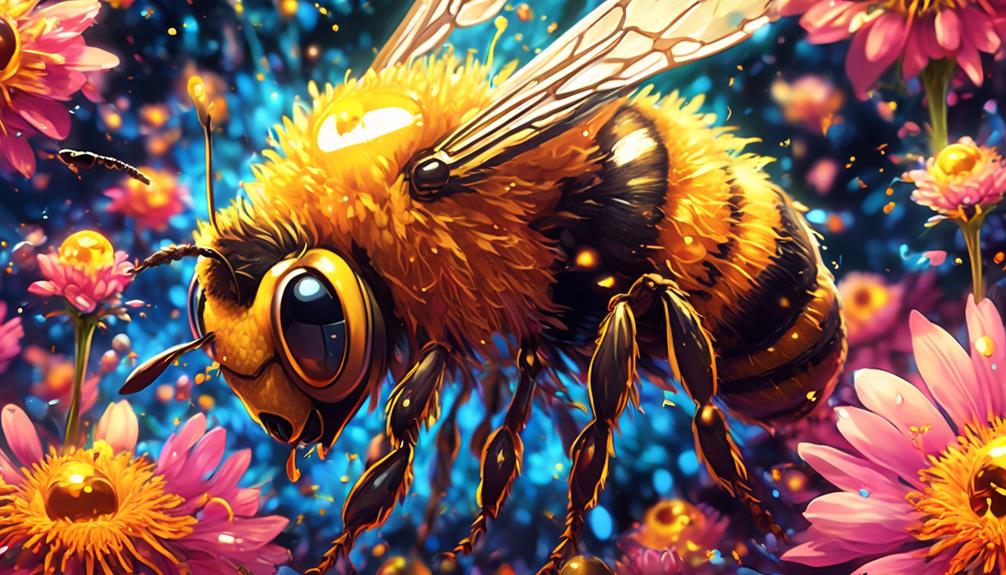
Ever wondered how the bee's unique vision affects pollination? Well, their five eyes play a crucial role. The bees' two compound eyes help them locate flowers, while their three simple eyes, or ocelli, perceive light intensity, aiding in their navigation.
Now, let's consider how their vision impacts pollination. Bees are primarily attracted to purple, blue, and yellow flowers. Their trichromatic vision, unlike our own, allows them to detect ultraviolet light, which we can't. Fascinatingly, many flowers have UV patterns, often referred to as 'nectar guides', which are invisible to human eyes but not to bees. These patterns lead them to the flower's nectar, ensuring pollination.
Bee Vision Aspect | Impact on Pollination |
|---|---|
Trichromatic Vision | Allows detection of UV 'nectar guides' |
Compound Eyes | Helps locate flowers |
Ocelli | Aids in navigation to and from the hive |
Frequently Asked Questions
What Are the Differences Between the Vision Capabilities of a Bee and a Human?"
You've got two eyes, but bees have five. They see ultraviolet light that you can't, aiding in finding nectar.
Their three small eyes on top of the head detect light intensity, helping them navigate.
However, you've got them beat with depth perception and focus.
Can Bees See Colors That Are Not Visible to the Human Eye?"
Yes, bees can see colors that aren't visible to the human eye. They're sensitive to ultraviolet light, which humans can't detect. This allows them to find flowers that reflect UV light.
They perceive a color called 'bee's purple,' a mix of yellow and ultraviolet light. However, they can't see red, which to them appears as black.
How Do Environmental Factors Like Light or Weather Affect a Bee's Vision?"
Light and weather greatly impact a bee's vision. In bright light, your bee can see ultraviolet light, which is invisible to us. It's why they're great at finding flowers.
But in low light or bad weather, they're quite limited. They can't see well and their flying becomes erratic. So, they're not big fans of rain or cloud cover.
It's not just about having 5 eyes, it's about how those eyes work with their environment.
Are There Any Common Diseases or Issues That Can Impair a Bee's Vision?"
Yes, there are diseases that can impair a bee's vision.
One common issue is the parasitic mite, Varroa destructor, which can damage a bee's eyes during its larval stage. This mite feeds on the bee's hemolymph, affecting its development and potentially causing deformities, including eye damage.
Another disease that can cause bee blindness is Nosema Apis, a microsporidian fungus. This fungus attacks the bee's retina, leading to impaired vision.
It's crucial to monitor bee colonies for these issues to maintain their health.
How Do Bees Adapt if They Lose Their Vision or One of Their Eyes?"
When a bee loses its vision or an eye, it's forced to adapt. It relies more heavily on its other senses, like touch and smell. It's also guided by the sun's position and patterns of polarized light most bees can see.
Conclusion
Now you know, bees have 5 eyes for a fascinating evolutionary purpose. These tiny, complex organs offer superior vision capabilities, aiding in their primary roles of communication and pollination.
Their multiple eyes not only help them locate the best flowers but also communicate crucial information to their hive.
So, next time you spot a bee, remember the intricate, essential role their five eyes play in our ecosystem. It's truly a marvel of nature's engineering.


